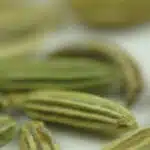Beets are like the crown jewel of autumn vegetables. With their deep, earthy flavor and bright colors, beets have a unique ability to bring life to any dish they’re added to. If you want to enjoy their succulent taste and vibrant color this season, then now is the time to start growing your own. Growing beets is a simple process that can provide you with a hearty autumn harvest that will last through the winter months. In this article, we’ll discuss how to grow beets this fall for an abundant crop of delicious produce.
The first step in growing beets is choosing the right variety for your location and climate conditions. There are dozens of different types of beets available, so take some time to do your research before deciding which kind is best for you. From classic yellow or red varieties to heirloom types such as Chioggia or Crosby’s Egyptian, there’s something for everyone when it comes to growing beets this fall.
Once you’ve chosen your variety, it’s important to plant them at the right time so they have plenty of time to mature before winter arrives. You can also consider companion plants like onions or garlic when planting your beets, as these vegetables tend to grow well together and help protect against pests and diseases. Finally, regular maintenance throughout the harvesting season will ensure that you get the most out of your beet crop this fall.
Selecting Beet Varieties
The variety of beet available for harvest this fall is seemingly endless, an almost dizzying array of colors, shapes, and sizes! Selecting the best beet varieties for your autumn garden can be a daunting task. Fortunately, there are some key considerations to help narrow down the selection.
First, consider the type of beet you would like to grow. If you’re looking for a sweet flavor, try varieties such as ‘Detroit Dark Red’ or ‘Early Wonder.’ For a more savory flavor, ‘Bull’s Blood’ or ‘Albino’ may be better options. You can also consider growing a mix of different varieties to add complexity and variety to your harvest.
Once you have decided on the type of beet you would like to grow, it’s time to start preparing your garden soil. The soil should be fertile and well-drained with plenty of organic matter mixed in. Be sure to loosen the soil before planting and incorporate some fertilizer into the mix if needed. Additionally, make sure to give your plants plenty of water throughout the season for optimal growth.
Preparing The Garden Soil
Picking the perfect plot for planting beets is paramount for a productive autumn harvest. Preparing the garden soil is pivotal in ensuring that the beets are robust and plentiful. When prepping the land, it’s important to know what type of soil is best suited for planting beets.
A well-draining, loamy, fertile soil composed of sand, silt, and clay is suitable for growing beets. If possible, incorporate organic matter such as compost or manure into the soil to increase its fertility. To ensure that the soil has sufficient drainage, dig some trenches or holes throughout the area and fill them with water. If they take longer than 30 minutes to drain, then you may need to add more organic material to improve drainage.
Once your soil is ready to go, it’s time to plant those beet seeds! Make sure you choose a sunny spot with at least 6 hours of sunlight each day and sow your seeds about 1/2 inch deep in rows that are spaced 12 inches apart. With proper preparation and care, you’ll have a hearty autumn harvest of beets in no time!
Planting Beet Seeds
You’ve done the hard work of preparing the soil, and now it’s time to start planting! It’s easy to get excited about growing your own beets this fall, but there are still a couple of steps you need to take in order to ensure a healthy harvest. What do you need to know when it comes to planting beet seeds? Let’s find out.
First off, you’ll want to make sure that you plant your beet seeds at the right time of year. Planting too late or too early can result in stunted or even failed growth. To get the best results, sow your seed directly into the ground when temperatures are between 50°F and 80°F. If temperatures drop below 50°F, the seed may not germinate at all.
When it comes to actually sowing the seed, it’s important to keep in mind that beets don’t like overcrowding. So, give them enough space by planting seeds one-half inch deep in rows spaced at least three inches apart. It’s also important to remember that beet seeds actually contain several individual seeds within each one—so if you’re unsure how many you have, just spread them out evenly and thin them later as they sprout up and begin to grow.
Now that you’ve planted your beet seeds, it’s time for some watering and feeding! But before those steps come into play, give those little seeds some time and watch as they begin their journey into hearty autumn harvest.
Watering And Feeding Beets
It’s surprisingly easy to grow beets this fall for a bountiful harvest. In fact, according to the U.S. Department of Agriculture, beets are one of the most nutrient-dense vegetables you can grow in your garden. So it’s no surprise that more and more people are looking to add them to their autumnal crops!
The fourth step in growing beets is all about watering and feeding them properly. Be sure to water your beets deeply and regularly so they grow plump and healthy roots. You should also feed them with a balanced fertilizer every three weeks or so – this will help ensure a hearty harvest come autumn. Additionally, mulching around your plants helps conserve moisture and protect against weeds while keeping soil temperatures consistent.
With proper care, you’ll have plenty of fresh produce ready for picking by late September or early October. After that, it’s time to start working on controlling those pesky weeds!
Controlling Weeds
Growing beets is like negotiating a maze. The path to a successful autumn harvest requires careful attention to every step, from choosing the right kind of soil to controlling weeds. As we reach the fifth step in our journey, we enter a new challenge – controlling weeds.
Weeds can quickly overtake a garden and smother beet plants if left unchecked. To prevent this from happening, it’s important to keep weeds at bay by removing them as soon as they appear. For smaller patches of weeds, hand-pulling is effective. Larger areas may require additional measures such as tilling or smothering with mulch or newspaper. Keeping pathways clean and free from debris also helps reduce weed growth around the beet plants.
With proper weed control in place, you can have confidence that your beets will thrive in their environment and provide you with a bountiful autumn harvest. Now it’s time to focus on protecting your beets from pests so they can continue on their journey towards maturity.
Protecting Beets From Pests
Once you’ve taken the steps to successfully seed and grow your beets, it’s important to take measures to protect your plants from pests. Pests such as slugs and caterpillars can quickly destroy your crops, but fortunately, there are a few simple steps you can take to help keep them away.
One of the best ways to deter pests is to use floating row covers. Floating row covers will provide protection against most common garden pests without harming beneficial insects like ladybugs or bees that also live in your garden. They also help keep weeds at bay, reducing the amount of time you need to spend weeding. You should also consider using companion planting – growing certain plants together – as this can act as a natural pest repellent while also providing additional benefits like improved pollination and soil fertility.
Finally, it’s important that you keep up with regular monitoring of your beets for any signs of damage or infestation. Keeping an eye out for telltale signs like wilting leaves or holes in the leaves can help you catch any potential pest problems early on so they don’t spread throughout the entire crop. With these steps in place, you’ll have a better chance of having a successful harvest come autumn! To ensure a bountiful harvest come fall, don’t forget to move onto the next step: harvesting your beets!
Harvesting Beets
Harvesting beets is the last step in growing them for a hearty autumn harvest. This can be done in two ways: either by harvesting the entire plant or by removing the beetroot from the plant. When harvesting the entire plant, pull the beet gently from the soil and cut off any remaining leaves. For those looking to just remove the beetroot, loosen up some of the soil around them with a garden fork and carefully lift out each root.
It is important to keep in mind that when harvesting beets you should avoid cutting into them as this will cause them to lose their flavor and texture. Instead, use your hands to gently wiggle them out of the ground. Additionally, it is best to pick smaller sized beets as these tend to have a sweeter taste than larger ones.
Once you have successfully harvested your beets, it’s time to prepare them for storage so they can be enjoyed fresh all season long.
Storing Beets For Fresh Eating
Ah, storing beets! Not only is it a crucial step for ensuring that you can enjoy your beets throughout the fall and winter, but it’s also the most satisfying part of the entire process. After all that hard work from planting to harvesting, you’ll get to reap the rewards of your labor in no time!
Storing beets is super simple, and doesn’t take much effort at all. If you plan on using them soon after harvest, they can simply be left in their dirt clods with their greens still attached and stored in a cool, dry area. For long-term storage, however, you’ll need to remove the greens before washing and drying them completely. Then place them in plastic bags filled with slightly moist sawdust or sand and store them in a refrigerator or root cellar.
You’re now well on your way to delicious beet dishes this season! But before you indulge your taste buds make sure to brush up on how to deal with any potential diseases that could affect your crop.
Dealing With Beet Diseases
Beet diseases can be a challenge for gardeners, but with the right knowledge and preventative measures, they can be managed. The most common diseases affecting beets are leaf spots, powdery mildew and downy mildew. These diseases can cause wilting and discoloration of the leaves, stunted growth and poor yields. To avoid these problems, it’s important to provide adequate air circulation around your beets by spacing them properly when planting and keeping the soil moist but not overly wet. Additionally, rotating crops regularly is an effective way to reduce disease pressure.
In addition to good growing practices, using organic fungicides such as sulfur or neem oil can help prevent and control disease in your beet crop. Applying these treatments before symptoms appear is the best way to ensure success. When applying fungicides, always follow the manufacturer’s instructions carefully to ensure safety and effectiveness.
These steps will go a long way in helping you achieve a healthy harvest of beets this fall. With proper preventive measures in place, you’ll have healthier plants with fewer pest and disease issues — setting you up for a maximized yield come autumn!
Maximizing Yields With Succession Planting
It’s the ultimate dream of every gardener – maximizing your harvest with next-level yields! And it’s possible to achieve that in the fall with a simple trick: succession planting. This incredible technique is guaranteed to take your harvest to the next level, ensuring a hearty autumn feast for you and your family.
Succession planting works by sowing two or more crops successively over a period of time. It’s an incredibly effective way of getting more from your garden without having to do any extra work. You can use this technique for almost any crop, but beets are particularly well-suited for it.
You can sow seedlings every few weeks in order to ensure a steady supply of beets throughout the season. Just remember to choose varieties that mature at different times so that you have something ready when earlier harvests have been exhausted! Get ready for the best autumn harvest yet – with succession planting, you’re sure to get maximum bang for your buck!
Growing Beets In Containers
Planting beets in containers is a great way to maximize the yield of beets in your garden. Containers are small, so you can fit a few more plants than you would in the ground. Plus, it’s easier to keep track of which plants have been harvested and which are still growing. When planting beets in containers, it’s important to select ones that are specifically designed for vegetables, like terracotta or plastic pots. Make sure they have enough drainage holes and fill them with quality potting soil. Plant one seed per inch of soil depth and keep the container moist but not soggy.
Beets tend to grow quickly and need plenty of nutrition to reach their full potential. As such, make sure to fertilize the container regularly with an organic fertilizer like fish emulsion or seaweed extract. It’s also essential to ensure that the container gets plenty of sunlight throughout the day; otherwise, your beet crop will suffer from stunted growth. If necessary, move your containers around during the day in order to get maximum exposure to sunlight.
Finally, harvest beetroots once they reach 2-3 inches in diameter for optimal flavor and texture. Don’t forget to save some of the greens as well; these can be cooked up as a delicious side dish! With proper care and attention when planting beets in containers this fall, you’ll reap a hearty autumn harvest in no time.
Growing Beets In The Shade
It’s a long road ahead when it comes to growing beets in the shade, but it’s not an impossible one. In this case, you’ll need to be ready to roll up your sleeves and get your hands dirty. To help you out with this daunting task, we’ve put together this guide that will have you harvesting beets in no time.
First and foremost, you’ll need to make sure that the area is shady enough for the beets to grow properly. You’ll also want to keep an eye on the moisture levels of the soil since too much sunlight can cause water evaporation. Additionally, ensure that the soil has good drainage since standing water can cause problems for root vegetables like beets.
Furthermore, it’s essential to choose a variety of beet that is known for its ability to thrive in shaded areas. Some varieties such as ‘Cylindra’ or ‘Lutz Green Leaf’ are well-suited for growing in areas with less than six hours of direct sunlight per day. With the right variety chosen and proper care taken, you should have a successful harvest in no time! With all these tips in mind, let’s move on to companion planting with beets…
Companion Planting With Beets
Growing beets can be a rewarding experience, but achieving success with this root vegetable requires careful planning. As with any other gardening project, the key to success is making sure each step of the process is done correctly. Companion planting with beets is an essential piece of that puzzle, as it can help ensure a healthy harvest come autumn.
Companion planting is when two or more plants are planted together in order to benefit each other. In the case of beets, some good companion plants include carrots, onions, and radishes. These vegetables all have similar growing requirements, so they will thrive together in the same patch. Additionally, they have different root systems which means they don’t compete for nutrients in the soil.
The benefits of companion planting don’t end there either; when planted alongside one another, these vegetables can also provide natural pest control and nutrient exchange. For example, onions and garlic emit odors which act as a deterrent for pests like aphids and caterpillars that may otherwise attack your beet crop. Additionally, legumes such as peas will help fix nitrogen into the soil which helps keep your beets healthy and strong throughout their growing cycle.
By using companion planting techniques in your garden this fall you can ensure that you get the most out of your beet harvest!
Growing Baby Beets
Planting beets is a perfect practice for the prune and purposeful planter. Preparing for the impending autumn harvest requires careful consideration in order to achieve a bountiful bounty. These fourteen steps will guide you towards growing baby beets for your ideal autumnal feast.
Firstly, select beet varieties that are suited to your climate and soil conditions. Plant beets in full sun, though some partial shade will suffice. The seeds should be planted about two inches apart and around half an inch deep into the soil. Mulching will help retain moisture, which is especially important as baby beets require consistent hydration throughout their growth cycle.
Once grown, you can choose to either harvest the entire beet or pick out just the smaller baby ones if desired. Harvesting early can give you tender and sweet beets that are great for salads or grilling! To ensure that your crop remains healthy over time, it is important to practice good weed control by removing any weeds near your beet plants as they compete with them for nutrients in the soil.
With these simple steps, you’ll soon have beautiful baby beets ready to add a vibrant burst of flavor to any dish! Now that you know how to grow them, it’s time to learn how best to save those precious beet seeds so they can continue producing year after year…
Saving Beet Seeds
Saving beet seeds is a great way to ensure a hearty fall harvest. It’s an easy process that doesn’t require a lot of time or effort and will help you get the most out of your autumn bounty.
First, it’s important to wait until the beets are fully ripe before harvesting them. Once they are ready, cut off the top and bottom and set aside the edible part of the beet for eating. Then, take the remainder and put it in a paper bag or other container so that the seeds can dry out for about two weeks. Once dried, remove the seeds from the bag and store in an airtight container in a cool, dry place until ready to plant again.
Beet seeds are easy to save, but if done correctly, they can provide bountiful harvests for many years to come. With just a little bit of patience and some extra steps, you can make sure that your garden is full of delicious beets this fall!
Frequently Asked Questions
What Are The Best Varieties Of Beets To Grow This Fall?
Did you know that beets are one of the most widely grown root vegetables in the world? The sweet and vibrant color of these vegetables make them a favorite amongst gardeners. If you’re eager to have a hearty autumn harvest, then you should consider growing beets this fall!
When planning your autumn garden, it’s important to choose the right varieties of beets. There are many different types of beets that can be grown during this season. Depending on your climate and soil conditions, some varieties may do better than others. Some popular varieties for fall include Early Wonder Tall Top, Detroit Dark Red, Bull’s Blood, Chioggia, and Cylindra. These varieties are known for their sweet taste and deep colors.
No matter which variety you choose to grow, there are a few tips that can help ensure a successful harvest. Make sure to provide your plants with plenty of sunlight and water throughout the growing season. You’ll also want to keep weeds away from the roots by using mulch or other methods. Additionally, fertilizing once or twice during the season can help promote healthy growth and development. With these tips in mind, you’ll have a bountiful beet harvest this autumn!
How Much Water And Fertilizer Do Beets Need?
Beets are an excellent addition to any fall harvest, and knowing how much water and fertilizer they need is essential. Growing beets can feel like a bit of a juggling act, with the perfect balance of moisture and nutrients required for success. After all, too little water will leave your beets limp and shriveled while too much fertilizer can cause them to become bitter and hard.
To illustrate this point, I recall a time when I was growing beets in my own garden. I underestimated how much water they needed and ended up with soft, tasteless roots that were definitely not enjoyable to eat! It was only after I adjusted the amount of water with some trial-and-error that I was able to get the perfect, hearty beet harvest.
So how do you know just how much water and fertilizer to give your beets? Ideally, you should aim for about one inch of water each week during their active growth period. As for fertilizing your plants, using an organic compost or seaweed extract can really help give your beets the boost they need during those critical weeks of growth. By providing them with the right amount of nutrients at the right times throughout the season, you’ll have success in harvesting sweet, delicious beets come fall!
What Is The Best Way To Protect Beets From Pests?
Harvesting beets in the fall can be a great way to add a festive and hearty touch to your late summer meals. But before you get to that delightful point, you’ll need to tackle one key step: protecting your plants from pesky pests.
Fortunately, there are a few simple solutions that can help keep those bugs at bay. One natural solution is to use companion planting – this involves planting other species of plants alongside your beets that will act as a deterrent for insects. For instance, planting onions near beets can help ward off many types of beetles.
Another effective way of protecting your plants is by using insecticidal sprays or dusts. Be sure to only use these products when pests are actually present, as they can harm beneficial insects while also being potentially hazardous to humans and animals if ingested or handled improperly. With the right measures in place, you can ensure a bountiful harvest of delicious beets come autumn!
How Long Can I Store Beets For Fresh Eating?
The golden-red beets are a symbol of the changing of the seasons. As the vibrant hues of summer’s bounty give way to the rich oranges and earthy browns of autumn, so too does our diet change for the season. But with careful tending and storage, we can extend these colorful vegetables all through fall and winter.
Storing beets is simple if you know what to do: keep them in a cool and dry place, like a root cellar or basement. To ensure freshness, cut off any remaining greens from the top of the beet root before storing them. This prevents moisture from seeping into the root and causing it to spoil. If you want to eat them within two weeks, just store your beets in an airtight container or plastic bag in your fridge. Just make sure they are completely dry before putting them away!
For those looking to extend their beet harvest beyond just a few weeks, preserving methods such as pickling or canning can help keep your bounty fresh for months! Simply choose your favorite pickling recipe and store in sterilized jars or cans with an airtight lid. With this method, you’ll have delicious pickled beets all season long!
What Are The Benefits Of Succession Planting For Maximizing Yields?
Succession planting is a technique that can help gardeners maximize their yields when growing beets this fall. It involves planting small batches of seeds at multiple intervals throughout the season, rather than all at once. This ensures a steady supply of beets and can help extend the harvest. Succession planting also allows for a greater variety of beet varieties to be grown, as different types may have different maturity dates and require varying amounts of time in the ground.
The benefits of succession planting when growing beets include increased yield, extended harvest time and improved crop rotation options. By staggering seed sowing over several weeks or months, gardeners can get an extended harvest period – allowing them to enjoy harvesting and eating fresh beets throughout autumn. Additionally, by rotating beet crops within certain areas of the garden every season, gardeners can reduce disease pressure on their plants and improve soil health over time.
Succession planting is an ideal way to ensure a hearty autumn harvest from your beet crops this fall. With careful planning and some patience, you’ll reap all the rewards that come with it – from more abundant yields to improved crop rotation opportunities.
Conclusion
Beets are an incredibly versatile and nutrient-rich vegetable that is easy to grow in the fall. With proper care, you can enjoy a hearty harvest of beets this autumn. The best varieties of beets to plant are those that are suited for your climate, as well as ones that have good disease resistance. Beets need plenty of sunshine and water, but not too much fertilizer. To protect them from pests, consider using row covers or other physical barriers such as netting. Properly stored beets can last up to two weeks for fresh eating. Succession planting is a great way to maximize yields, by planting several small groups every few weeks over a longer period of time.
For example, one home gardener was able to achieve abundant yields with very little effort by succession planting their beet crop throughout the fall season. They planted several small groups of seedlings every few weeks starting in late August, and they were able to maintain consistent harvests well into November. By doing this they were able to enjoy fresh beets all season long!
In conclusion, growing beets this fall is an easy and rewarding task that can provide you with fresh produce throughout the autumn months. Be sure to choose the right varieties for your climate and keep them protected from pests while providing enough water and sun for optimal growth. Also consider succession planting to ensure a steady supply of beets all season long!





























